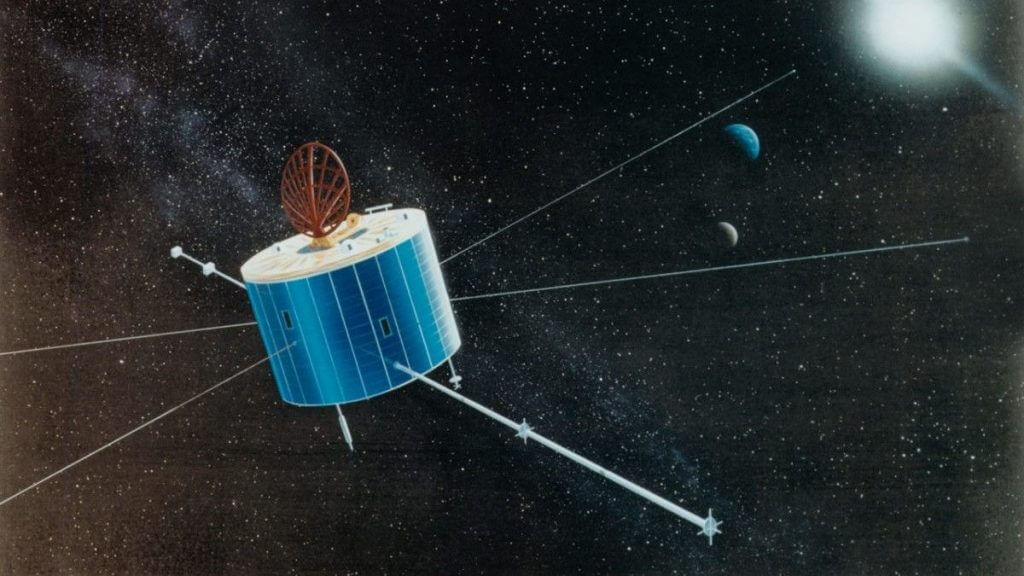
Data recorder failure on 30-year-old NASA spacecraft could end magnetic field mission (Image Credit: Space.com)
The second and only remaining operational data recorder aboard NASA’s magnetosphere-observing Geotail spacecraft has failed, jeopardizing a mission that has been in operation for three decades.
NASA scientists are working with the Japan Aerospace Exploration Agency (JAXA) and Japan’s Institute of Space and Astronautical Science (ISAS), partners on the Geotail mission, to determine the best path forward for the project, according to a NASA statement.
The problem with the recorder occurred on June 28 and was spotted by researchers at JAXA. Since the discovery, scientists have been conducting tests to determine the cause and extent of the damage. Attempts to recover the second data recorder have thus far been unsuccessful, and without a working recorder, Geotail can’t collect or download data, NASA said.
Related: Earth’s magnetic field booms like a drum, but no one can hear it
Geotail blasted off from what was then Cape Canaveral Air Force Station in Florida on July 24, 1992, bound to study of the “tail-region” of Earth’s magnetic field, the magnetosphere. When the solar wind,
a stream of charged particles and energy from the sun, encounter the magnetosphere, charged particles inside this structure travel along magnetic field lines and flow out in a wake behind the Earth, forming a long, tail-like region on Earth’s night side.
Settling into a high elliptical orbit that carried it through the invisible field lines of the magnetosphere, Geotail monitored this activity using a suite of equipment including the Magnetic Fields Measurement Monitor (MGF), and several particles instruments.
Geotail has thus been integral to our understanding of the way energy and matter from the sun affect Earth’s neighborhood and how the magnetosphere’s magnetic field lines move and rebound while producing explosive bursts that affect our magnetic environment.
In addition, during a dozen close flybys of the moon early in its mission, Geotail was able to identify oxygen, silicon, sodium and aluminum in the lunar atmosphere.
The year the spacecraft celebrated its 20th anniversary, in 2012, the first of Geotail’s two data recorders failed. The remaining data recorder has operated solo for 10 years. After 30 years of continuous operations, the Geotail mission has lasted more than seven times its original length of just four years.
Follow us on Twitter @Spacedotcom and on Facebook.





